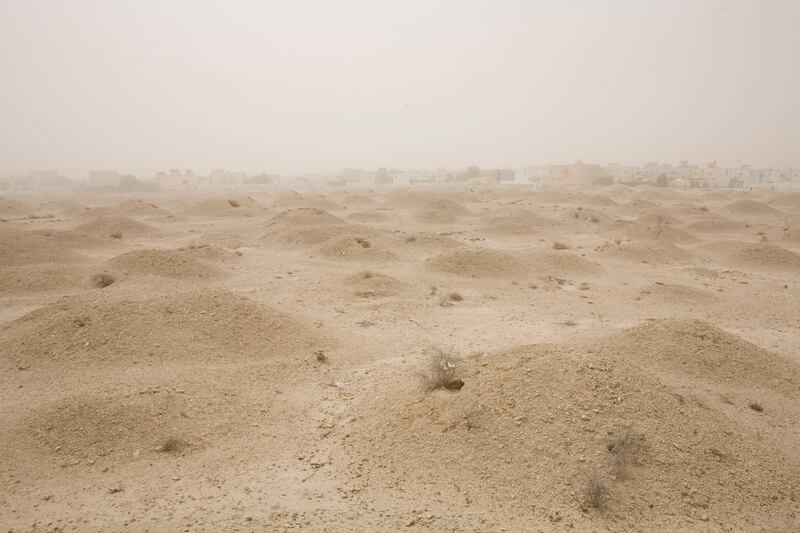Bahrain has discovered a pair of ancient dice, considered to be the first ever found in the county and probably used for gaming or fortune telling rituals, authorities said on Tuesday.
The dice were found during an archaeological excavation at Abu Saiba, a village in the northern part of the country.
“Many details are not known about the story of the dice’s origin, but it is considered the first dice discovered in Bahrain. It was part of a game or ritual of fortune-tellers,” the director of the department of antiquities and museums, Salman Al Mahari, told Al Arabiya TV.
“What looks like a hill cemetery was found dating back to the middle Tylos period (50 BC to 150 AD), with a maximum diameter of 70 metres, and a height between 4 and 4.5 metres,” Mr Al Mahari said.
Tylos is what the Greeks called Bahrain, which was a centre of pearl trading.
The department has been working on the site since 2017. It has conducted digs of a third of the total area of the hill, finding 93 burial sites.
This year, 23 new tombs were discovered and 11 were fully excavated.
Of those excavated, three were intact. The others had been looted, their contents stolen. Experts said they have provided interesting archaeological and anthropological material for the government.
“The main objective of excavating the Abu Saiba site is to study the culture of the people of Bahrain during the Tylos period to obtain accurate information about their funeral rituals, culture and trade relations,” archaeologist Julien Cooney said.
The burial sites provide information on the age, sex and health of those buried, he said.
In 2019, the Unesco World Heritage Committee voted to add Bahrain’s Dilmun Burial Mounds to the World Heritage List.
The landmark comprises 21 archaeological sites, in the western part of the island. They were built between 2050 BC and 1750 BC.
It provides evidence of the Early Dilmun civilisation, in about the second millennium BC, when Bahrain became a trade hub.
The island has one of the largest-known prehistoric cemeteries in the world.







